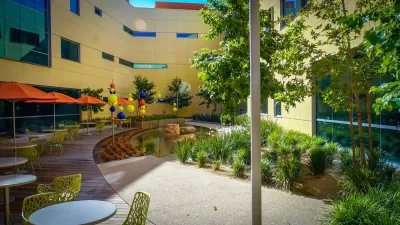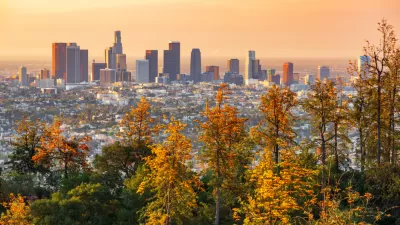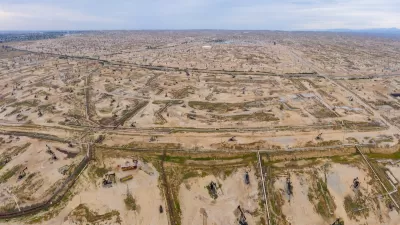The framework proposed by the authors of the Green New Deal may be too much for Congress, but many of these polices are already in place at the state level.

While the scope of the Green New Deal (GND) surpasses previous climate change legislation passed at the federal level, many of the rules and regulations proposed in the Green New Deal are already in place in some states, as shown in new analysis by Caitlin McCoy.
One example cited by McCoy points is the electrification of public transit. "Electric buses are expected to become a larger portion of public transit given pledges that states and cities are making to reduce emissions and electrify their bus fleets. About 33 percent of all transit buses in the U.S. are projected to be electric by 2045," McCoy writes.
Another area she highlights is energy efficiency in buildings. "California’s Building Energy Efficiency Standards are a notable example of standards for new buildings which were designed to tighten over time to reach high levels of efficiency and now serve as the foundation for the state’s Zero Net Energy building plans."
While the Senate has already rejected the GND, McCoy argues that the achievements of states can help federal policy makers avoid pitfalls and learn from the mistakes and successes of state policy makers. There’s also a way for policies to complement each other: "Federal policymakers have an opportunity to design programs that can be plugged into existing state policy architecture," McCoy argues, concluding that continuing to build on existing policies will help lawmakers create a more effective Green New Deal.
FULL STORY: The States as Green New Deal Policy Labs

Maui's Vacation Rental Debate Turns Ugly
Verbal attacks, misinformation campaigns and fistfights plague a high-stakes debate to convert thousands of vacation rentals into long-term housing.

Planetizen Federal Action Tracker
A weekly monitor of how Trump’s orders and actions are impacting planners and planning in America.

In Urban Planning, AI Prompting Could be the New Design Thinking
Creativity has long been key to great urban design. What if we see AI as our new creative partner?

King County Supportive Housing Program Offers Hope for Unhoused Residents
The county is taking a ‘Housing First’ approach that prioritizes getting people into housing, then offering wraparound supportive services.

Researchers Use AI to Get Clearer Picture of US Housing
Analysts are using artificial intelligence to supercharge their research by allowing them to comb through data faster. Though these AI tools can be error prone, they save time and housing researchers are optimistic about the future.

Making Shared Micromobility More Inclusive
Cities and shared mobility system operators can do more to include people with disabilities in planning and operations, per a new report.
Urban Design for Planners 1: Software Tools
This six-course series explores essential urban design concepts using open source software and equips planners with the tools they need to participate fully in the urban design process.
Planning for Universal Design
Learn the tools for implementing Universal Design in planning regulations.
planning NEXT
Appalachian Highlands Housing Partners
Mpact (founded as Rail~Volution)
City of Camden Redevelopment Agency
City of Astoria
City of Portland
City of Laramie





























